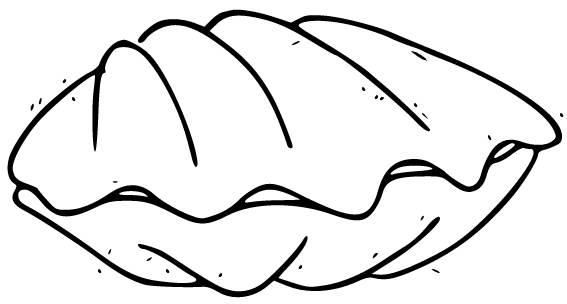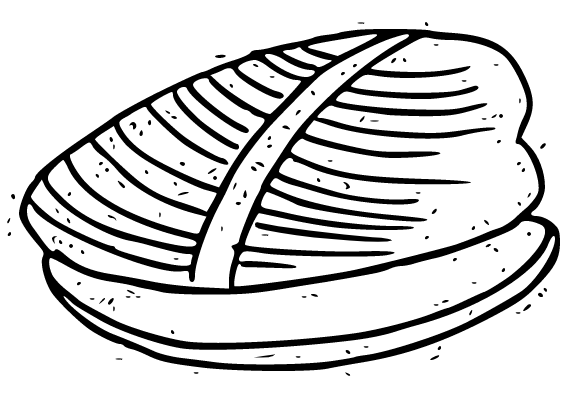-

-
The Discerning Mollusk's Guide to Arts & Ideas
-


Come Closer
Laurie Blauner
The Bitter Oleander Press, 2023
This is contentment, I declare to everything there, waiting to feel your hand hand on my ceheks, grateful that I’m no longer the person I once knew.L
(from “Self-Portrait at the Museum,” page 47)
aurie Blauner’s book of poems are about transformation, about schism and morph, about imagining and unsettling. This collection is divided into four major sections: “I’m Not Like the Others,” “The Books,” “The City That Knows Me,” and “Guide for the Perplexed.” Through this arrangement, the poet lucidly moves across households, urban landscapes, and abstracted wonderlands, combining prose and lyric into an otherworldly mess that is at once chilling in its commentary and blindingly magnificent in its inventiveness.
This is a feminist book that comments on positionality and authority, that investigates imbalances and the heaviness of social disorder. It is a book that is concerned with situations and systems, with communication and capability. It is a book of poetry that could be read as a guide as much as a collection of puzzles.
At first the woman was a puzzle like the moon with tis strangely cool breath and shoulders. Then I understood her mouth, the fog of her ever-reaching arms. I chased her and she resembled a deer with her spare worry. I overheard the snake whispering that knowledge belonged to everyone.
(from “Once She Was a Part of Me,” page 67)
Most of these poems open with the emergence of the speaker in a position of counter. The speaker serves startling foil to otherwise everyday contexts, to the flow of the status quo. These speakers range from bizarre to familiar, but often as foil they challenge. They present themselves by way of transgression against or transcendence from a space or person.
In the opening poem, “I’m Not Like the Others,” Blauner’s speaker is monstrous as it approaches a small boy with feathers that will turn to scales. “I am somewhere between good and bad” the speaker tells the boy amidst the visceral descriptions (page 15). In “Mementos from the New City,” the speaker and others don dog masks to chase cats (page 59) and similarly, toward the end of the last section in a Labyrinth poem, “Would I Do Anything for You?”, the speaker comments on their body’s transformation: “a new kind of animal rises up inside of me. But it’s just me, with my new cow face, my splotched hide, my impatient little ears.” (page 75).
Other poems bring strangeness inward and flip status quo on its head, as in “Bird,” a marvelously surreal poem that embodies the most grotesque aspects of magical realism: “It eats again and one morning when I wake up, Bird resembles me, is me. Bird stands, sighs, and walks out of the house, shutting the front door, escaping.” (page 16). Blauner’s poems often feel linear and contain narrative elements that push them along. Her work is uniquely charged with providing resolution, an ending following a beginning.
As the poems roll out and the book progresses, Come Closer moves cascades into its own transformation: it is a lengthy proclamation, a challenge, of the strange. In the second section of the book, Blauner comments on this directly. “The Book of Poetry” opens: “is a house of little voices, surrounded by furious birds, / changeable trees, muscular fields, lost in a wind that doesn’t end.” (page 43). The book’s poems are not nearly about the world, they contain the world in them, and the speakers are forever etched into this structure, forever taking cover from the cruelty of the wind.
After I’m dead, another animal crawls out of my body and tries to stand on two legs, just as it’s watched me do many times.
(from “I Don’t Want to Do That Again,” page 26)
Like Kim Hyesoon, the meaning beneath these bodily metaphors concerns many aspects of identity, existence, and relationship: independence, concealment, liberation, flight. But Blauner isn’t afraid to look closer at the shadowy core, the brutal, the horror: in “Someone Else’s Feelings” her speaker borrows a man’s face (page 17). In “The Bomb” the speaker survives the blast of a bomb and remains as “edges and corners” (page 22).
Blauner goes even further to break down familiar aspects of everyday life into haunting, grotesque caricatures of themselves, as in “Is That All It Takes?”, which disembodies a mustache from a man as a way to connect and find bearable the communication: “The mouth beneath spews words, which, with a bit of air and moisture, form the shapes of carnival animals performing tracks” (page 23).
Many of Blauner’s poems contain juxtapositions between the self and intimate others, usually family. These poems often involve little dialogue and as such play out in their descriptions like dance or painting. The poet’s work in Come Closer alludes to a need to see difference and better understand it—but not simply by talking about it, but through action, through movement, through breath and life. These are not wholly optimistic works, but they are works that bring forward answers as much as they bring forward provocation.
I am new. I rush to meet her, with my new arms and legs, all the while realizing I will no longer need my imagination.
(from “I Think I Will,” page 63)
